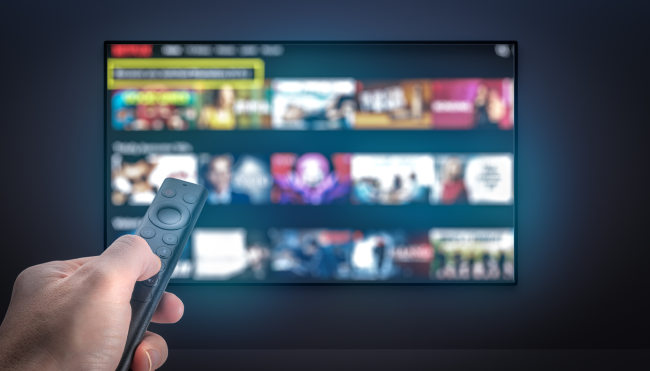- Why Amagi
-
Solutions
Contact UsBusinessWho We Serve
- Offerings
- AI
-
Resources
Contact UsINDUSTRY REPORTSAmagi FAST Report #15: The Power of Live Programming: A Catalyst for Streaming SuccessAugust 21, 2025Read More
-
Company
Contact UsNewsroomAmagi launches AI-powered Smart Scheduler to improve content programmingApril 3, 2025Read More
Blog
Make your content more accessible with Amagi's closed captioning service
By Kushagra Pandey, Product Manager, Amagi and Hamza B Udaipurwala, Software Development Manager, Amagi - October 29, 2021
As a content creator or broadcaster, what are some of crucial things you need to worry about? Yes, a rock-solid plan to create channels and distribute and monetize them across platforms. Content quality is definitely part of the game. But are they enough? The answer is no. Among others, a key aspect you need to think about is—content accessibility.
The question is, are all your viewers able to access your content?
The World Health Organization (WHO) reports that more than 5% of the world’s population suffers from hearing disabilities. Though 5% seems like a small number, it totals over 430 million people across the globe. With the rapid increase of online video content, it’s become more important now to make this content accessible to everyone. If your content is not accessible to this huge chunk of audiences, you are losing out! What can you do to change this? It’s simple. Make your content more accessible through closed captioning.
Captions for content, specifically closed captioning, is a globally accepted standard for giving more people with hearing disabilities access to content.
How is open captioning different from closed captioning, you ask? Both serve the same goal of providing an acoustic experience for those who have trouble hearing. Yet, closed captions allow users to add or remove captions, whereas open captioning stamps or imprints text indefinitely on the screen.
Closed captions are the key to video accessibility.
- Like subtitles, captions present spoken dialogues as printed words on any display device.
- Unlike subtitles, captions are precisely placed to recognize speakers, music, expressions, and sound effects to enable full participation of audiences who are suffering from hearing disabilities.
- Closed captions help viewers consume streaming video on channels where audio is designed to be optional, for instance in deployments across restaurants, airports, gyms, retail, and other businesses.
- With effective captions, viewers can easily follow the content even in noisy surroundings.
- Content within a closed caption file not only has speech but also includes non-speech elements like sound effects and speaker IDs that are crucial for understanding the plot of the video. Typically, a CC icon is used to indicate closed captions on a video player.
Closed captioning in the US is governed by guidelines established by DCMP, FCC, and WCAG. By following these standards, broadcasters and content creators ensure their captions meet the legal requirements of the United States and are accessible for deaf and hard-of-hearing individuals.
Making your content accessible is not optional. Failure to comply with captioning rules might result in huge fines and penalties. One such case includes the recent accessibility rules violation by a leading platform, which ended with a $3.5million fine imposed on the broadcaster. Therefore, it would help content owners, platforms, and services to have a clear understanding of some of the key guidelines.
Described & Captioned Media Program (DCMP)
DCMP is a set of guidelines that includes best practices for captioning. The primary objective is to include as much of the original language as possible. DCMP states that caption quality must be accurate, consistent, clear, readable and must convey the meaning and material of the content entirely.
FCC (Federal Communications Commission) guidelines
The FCC caption quality standards are applicable for pre-recorded, live, or near-live video programming. Captions must be accurate, synchronous with the audio track, complete and properly placed on the screen, and shouldn’t overlap with other captions or appear off-screen.
Web Content Accessibility Guidelines (WCAG)
WCAG includes a set of best practices for web accessibility, covering everything from keyboard functionality to video accessibility. It has three versions: WCAG 1.0, 2.0, and 2.1. Among these, WCAG 2.0 is the most widely used.
Now, which of these rules must a broadcaster be mindful of? In many ways, WCAGs are all-encompassing, and ensuring adherence to them largely ensures adherence with the others. However, for broadcasters who offer a significant amount of live programming, the FCC guidelines are the gold standard.
Closed captioning: Current challenges
When the FCC ruling took captions into the internet realm, it stated that video websites and TV networks must include closed captions for any TV content streaming online. In other words, video content that is aired on TV, even in the past, must have closed captions while being streamed online again. The advanced FCC regulations also have requirements for caption correctness, completeness, and timing.
When a captions-related issue is reported, the broadcaster needs to prove that there were no issues. The captioning rules affect every device, network, and website that accommodates long-form broadcast content. Though closed captioning doesn’t apply to all entities currently, it will soon become critical as distribution technologies evolve.
Ace closed captioning with Amagi’s Capsequo service
Amagi’s Capsequo service is the perfect solution for ensuring caption compliance. Here are some features of the module:
- Implements AI/ML based Google Speech to Text (GS2T) that is a cost-effective method, with plenty of features like rich context
- Supports EEG Alta that implements iCap protocol enabling 50+ human captioning companies worldwide to be connected with playout, giving more accurate captions.
- Allows multiple services to call it simultaneously with input audio streams and provides captions in the required format.
Depending on your requirement, Capsequo lets you choose the captioning style. You can either make the captions pop up on screen, have them painted on from left to right or choose to roll in one line after the other.
One of our success stories involves a leading esports channel for which we enabled live events and near-live events (deferred live) playout through live captioning.
- AI-based GS2T was used to deliver high-quality, low-cost captioning.
- The output playout stream was captioned using GS2T, with the incoming text getting converted to captions in real-time.
When it comes to choosing a captioning service, accuracy is paramount for a broadcaster. Amagi’s Capsequo is one of the most versatile solutions that can deliver a perfect mix of accuracy and cost efficiency. It supports automatic and 50+ human captioning solutions including VITAC, along with all major audio and caption formats. It also enables switching between AI and human captioners, and audio switching in case of redundant systems.
As Amagi caters to a growing number of Spanish content creators across streaming platforms, Capsequo also supports closed captioning in Spanish using Google Speech to Text.
Supports all configurations of multiple caption providers | Completely secure | Easily pluggable | Extendable to more captioning services
If you want to explore Capsequo further, contact us at cloudandme@amagi.com.
Related Blogs
Get started
Increase revenue and reach with our Broadcast & Streaming solutions.
Cloud modernization. Streaming unification. Monetization. Marketplace.
 German
German French
French Spanish
Spanish Korean
Korean Japanese
Japanese Portuguese
Portuguese


